| My wife and I toured “The Terracotta Army: Legacy of the First Emperor of China” at the Virginia Museum of Fine Arts in Richmond, VA, yesterday. Information on the exhibit from the VMFA website states, “First discovered in 1974 by farmers in China, an underground army of nearly 8,000 life-size terracotta figures is known as one of the greatest archaeological finds of the 20th century. Discovered one mile east of the known burial site of the First Emperor of China (r. 221–210 BC), or Qin Shihuang, the terracotta army was created to accompany the emperor to the afterlife.” Though there are only 10 warriors in the largest room of the exhibition, the impact is quite awe-inspiring when you see the two columns of the monochromatic warriors. Equally remarkable are the preceding galleries of ancient and priceless artifacts from the Qin (pronounced “Chin”) state. | |
Click the images below to enlarge.
| | |
The exhibit’s accompanying brochure said, “Presented in three sections, this exhibition explores the First Emperor’s rise to power, the history of the Qin state, and the First Emperor’s quest for immortality.”
That last bit – “the First Emperor’s quest for immortality” – called to mind a sonnet by Percy Bysshe Shelley called “Ozymandias” (In antiquity, Ozymandias was a Greek name for pharaoh Ramesses II, who ruled Egypt from 1279 BCE to 1213 BCE):
I met a traveller from an antique land,
Who said—“Two vast and trunkless legs of stone
Stand in the desert... Near them, on the sand,
Half sunk a shattered visage lies, whose frown,
And wrinkled lip, and sneer of cold command,
Tell that its sculptor well those passions read
Which yet survive, stamped on these lifeless things,
The hand that mocked them, and the heart that fed;
And on the pedestal, these words appear:
My name is Ozymandias, King of Kings;
Look on my Works, ye Mighty, and despair!
Nothing beside remains. Round the decay
Of that colossal Wreck, boundless and bare
The lone and level sands stretch far away.”
The article by reporter Katy Waldman opened, “The sonnet ‘Ozymandias,’ by Percy Bysshe Shelley, rose again this week. A trailer for the final season of Breaking Bad featured Walter White reciting the poem, first published in 1818, while a time-collapsed reel of New Mexico landscape flashed by, as if some restless god from antiquity had put history on fast-forward.”
Oh, yes! I remember that! I remember seeing Walter White reciting Shelley’s “Ozymandius.”
At that point, our conversation turned to memories of our visit to New Mexico in 2016 and to the Breaking Bad episode entitled “Abiquiu.”
That particular episode, the eleventh installment or Season 3, opens in a flashback, where Jesse and Jane visit the Georgia O’Keeffe in Santa Fe. They view O’Keeffe's painting My Last Door which depicts a door in a courtyard in O’Keeffe’s home in the northern New Mexico town of Abiquiú.
O’Keeffe said that that door was the reason she bought the home, and she painted it many times. I Google-searched images of “Georgia O’Keeffe door,” and here are just a few of the examples that appeared:
Later, I found a blog post by Ann Daly about O’Keeffe and her fascination with that door. Daly’s blog post (HERE), includes the following:
When she first clambered into that ruin in the tiny hilltop village of Abiquiu, O’Keeffe was looking for a less remote outpost for her life in New Mexico. What she found was a beautiful view, spreading out over the Chama River valley to the low mountains beyond, and a walled garden with water rights, where she could grow the fresh food that was impossible to get for her current home, at Ghost Ranch, 15 miles to the north.
And, then, there was the patio door: a recessed, dark, double door punctuating a long stretch of adobe wall. “That door is what made me buy this house,” O’Keeffe said. “I used to climb over the wall, just to look at that door.”
O’Keeffe herself reported that her fascination with that courtyard door stemmed from a poem by Emmett Lee Dickinson entitled, “Oh that door Frame the Wall had worn” (below on the left). The artist said that moment she saw the door, the poem resurrected in her mind. Interestingly enough, the enigmatic poem, written in 1865, contains a reference to Qin Shi Huang, the first emperor of China, and the terracotta army buried in his mausoleum.
On a visit to the Lintong District, Xi'an, Shaanxi province of China in 1863, Dickinson heard rumors and claims of a buried army in a forgotten tomb for China’s first ruler, and he included an image of the mythological terracotta warriors in “Oh that door Frame the Wall had worn,” a poem about the need to purchase a home as pressing as Qin’s quest to be immortal.
Of course, Dickinson's poem inspired third cousin Emily to pen her poem "On that dear Frame the Years had worn" (below on the right). Perhaps it will inspire you to visit Abiquiu to see Georgia O'Keeffe's home or to visit the VMFA to see "The Terracotta Army: Legacy of the First Emperor of China”
| By Emmett Lee Dickinson: Oh that door Frame the Wall had worn Was precious on the House And when I first experienced It The purchasing, to Me – Pressing! ’Twas conceivably fair As Emperor Qin had tried To mount a cavalry in place Denying that he’d died. | By Emily Dickinson: On that dear Frame the Years had worn Yet precious as the House In which We first experienced Light The Witnessing, to Us – Precious! It was conceiveless fair As Hands the Grave had grimed Should softly place within our own Denying that they died. |
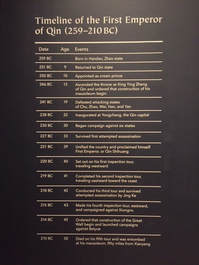
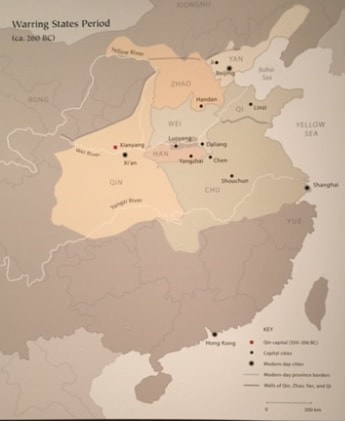
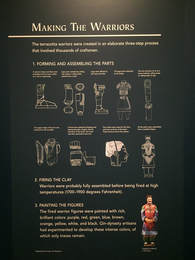
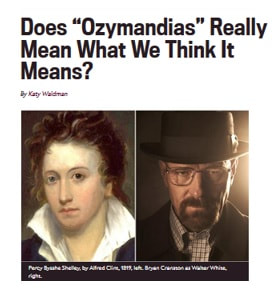
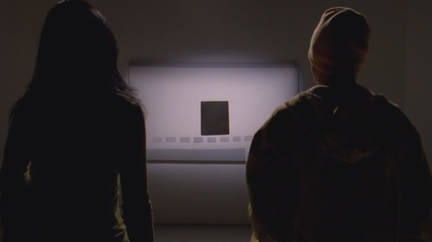

 RSS Feed
RSS Feed
